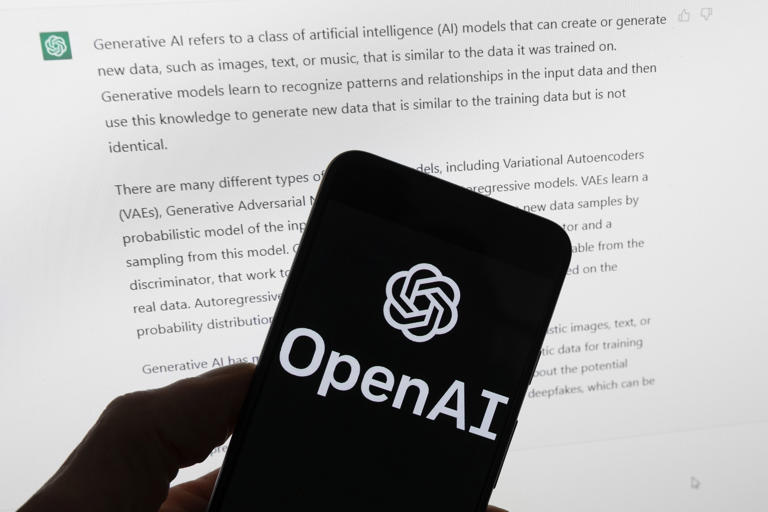“Discover how OpenAI successfully stopped five covert influence operations that misused AI models for deceptive activities. Learn about the origins of these operations, their impact, and the collaborative efforts undertaken to counteract them. This detailed report highlights the importance of transparency and accountability in the tech industry.”
In recent months, OpenAI has proactively tackled multiple covert influence operations that misused its AI models for deceptive online activities. These operations, originating from countries like Russia, China, Iran, and Israel, aimed to manipulate public opinion and influence political outcomes without revealing their true identities or intentions. The company’s report, released on Thursday, sheds light on these operations and the collaborative efforts undertaken to counteract them.

The Scope of the Operations
Over the past three months, OpenAI identified and halted five significant covert influence campaigns. These campaigns leveraged OpenAI’s advanced AI models to generate misleading content and fake engagement, thereby attempting to sway public opinion on various political matters. Despite these efforts, OpenAI reported that as of May 2024, these operations did not significantly boost their audience engagement or reach through the use of AI.
The revelation from OpenAI comes amid growing concerns about the potential impact of generative AI on upcoming elections worldwide, including in the United States. The findings highlight how networks involved in influence operations have harnessed the capabilities of generative AI to produce text and images at unprecedented volumes. Furthermore, these operations used AI-generated comments to create an illusion of widespread support or opposition on social media platforms.
Detailed Findings of OpenAI
Ben Nimmo, the principal investigator on OpenAI’s Intelligence and Investigations team, emphasized the importance of understanding the potential threats posed by the misuse of generative AI in influence operations. In a press briefing, Nimmo stated, “Over the last year and a half, there have been a lot of questions around what might happen if influence operations use generative AI. With this report, we really want to start filling in some of the blanks.”
OpenAI’s report provided detailed insights into specific operations:
Russian Operation: “Doppelganger”
The Russian campaign, dubbed “Doppelganger,” utilized OpenAI’s models to create headlines, transform news articles into Facebook posts, and generate comments in multiple languages. The primary objective was to undermine support for Ukraine by disseminating misleading information. Additionally, another Russian group employed OpenAI’s models to debug code for a Telegram bot that posted political comments in English and Russian. These comments targeted audiences in Ukraine, Moldova, the US, and the Baltic States.
Chinese Network: “Spamouflage”
The Chinese network, known as “Spamouflage,” has a history of influence efforts across platforms like Facebook and Instagram. This network used OpenAI’s models to research social media activity and generate text-based content in multiple languages. The goal was to amplify their influence across various platforms by producing convincing and engaging content.
Iranian Operation: “International Union of Virtual Media”
The Iranian operation, referred to as the “International Union of Virtual Media,” also exploited AI to generate multilingual content. The aim was to influence public opinion on a global scale by disseminating tailored messages across different regions and languages.
Collaborative Efforts to Counteract Influence Operations
OpenAI’s disclosure mirrors similar reports released by other tech giants. For instance, Meta recently published a report on coordinated inauthentic behavior, detailing how an Israeli marketing firm used fake Facebook accounts to conduct an influence campaign targeting users in the US and Canada.
To counter these deceptive activities, OpenAI collaborated with various stakeholders, including tech companies, civil society organizations, and governments. This collective effort aimed to identify and neutralize bad actors attempting to manipulate public opinion using advanced AI technologies.
The Broader Implications
The misuse of generative AI for covert influence operations poses significant challenges and risks. As AI technology continues to evolve, it becomes increasingly essential to establish robust mechanisms to detect and prevent its misuse. The efforts by OpenAI and other tech companies highlight the critical need for vigilance and proactive measures to safeguard the integrity of information disseminated online.
Importance of Transparency and Accountability
OpenAI’s transparency in disclosing these covert operations underscores the importance of accountability in the tech industry. By shedding light on these activities, OpenAI not only informs the public but also sets a precedent for other companies to follow. Transparency is a crucial step in building trust and ensuring that AI technologies are used responsibly and ethically.
The Role of Generative AI in Modern Influence Operations
The report highlights the growing sophistication of influence operations, which now leverage generative AI to create more realistic and engaging content. This shift necessitates a reevaluation of existing strategies to combat misinformation and disinformation. Traditional methods may no longer suffice, and there is a pressing need to develop new approaches that can effectively address the challenges posed by AI-enhanced influence operations.
Future Directions
Moving forward, the tech industry must continue to innovate and collaborate to stay ahead of malicious actors. This includes investing in advanced detection technologies, fostering cross-sector partnerships, and promoting the responsible use of AI. Additionally, there is a need for ongoing education and awareness to equip users with the knowledge and tools to identify and counteract deceptive content.
In conclusion, OpenAI’s efforts to halt covert influence operations using its AI models highlight the complex and evolving landscape of digital misinformation. Through transparency, collaboration, and innovation, the tech industry can work together to mitigate the risks associated with AI misuse and uphold the integrity of information in the digital age.
Read More-